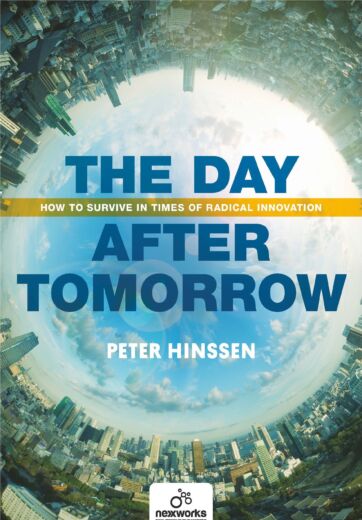We have talked to numerous business leaders and entrepreneurs during the course of our careers. Traditional moguls, start-up pioneers and business gurus alike, they are all saying pretty much the same: while most of us weren’t looking, all the rules have changed. The rules have been modified so much that we are actually playing a different game now. The very nature of the customer, the market and therefore of the organisation has transformed while a lot of companies are still playing by the old rules.

We are always surprised at how many organisations are still underestimating technology. They feel that it merely gives their competition “an edge”, but not enough to justify the investment from their side. What they fail to see is that the evolutions in technology are no longer about technology. Tech has matured so exponentially, that it has reshaped people’s behaviour, and with that, entire markets. Digital has transformed our environment into a network. And networks follow very different rules than traditional markets: they are faster, less predictable and much more ruthless.
THE fundamental shift that the network has set in motion is the empowerment of our customers. THEY are in charge. Not the CEO, not the CMO, not your R & D star inventor. Not even your almost genius-like Head of Innovation. The customer. The result is that we need to reverse our organisations. They need to be completely redesigned, from scratch.
First of all, in a customer-driven market, it is suicide to be a product-driven organisation. Companies used to create markets. They invented needs and then filled those needs. Nowadays, customers migrate to those players that understand and fill their “wants”. And their “wants” are VERY hard for traditional companies to follow. Not just because you need smart ecosystems of data and analytics to find out exactly what they want at which moment. But most of all, because their expectations are the exact opposite of those of the organisations. The latter want to sell the cheapest possible product at the most expensive price while customers want things to be free, or at the very least as cheap as possible. The terrifying thing is that this is NOT unreasonable. Not since the collaborative economy has set in motion a wave of dematerialisation, demonetization and democratization. But how will YOU survive when your competition gives them what you do for (practically) nothing? The simple answer is: you don’t. Not as you are now. You need to know that the (near) future of your organisation is not your organisation. You must understand that you might very well have to cannibalize the thing that is earning you the most of revenue at this very moment. Remember the adage “Eat or Be Eaten”? Today this has become “Eat Yourself or Be Eaten.” Different game, different rules.
The transformation that awaits you will be radical. If it isn’t, you might as well continue what you are doing now. The result will be the same anyway, and it won’t be pleasant. But for those who actually want to survive and thrive, the ride will be the most exciting one they’ll ever make. So, how can you redesign yourself in order to remain relevant in the coming years?
By pulling the customer into the heart of your company. Not in the almost “new-age” way that most companies are claiming they are doing. Being truly customer-centric needs to be ingrained into the very DNA of your company, into the way it is structured even. Most organisations are managed from the inside out, while they should be outside-in driven. Being customer-driven to the extreme is not just about business culture, as some may have you believe. It is about completely reversing your processes, your hierarchical structures and your KPIs.

Being truly customer-centric also means being ultra-fast. So fast that an organisation needs to be able to move together with the customer, on a granular individual level. This kind of intelligent speed can only be attained through the power of digital. Big Data, predictive analytics, robots, artificial intelligence, augmented reality, Quantum computing and the Internet of Things: they should all be on your wish list, or at least on your ‘to watch very closely’ list. Not because they are cool and disruptive - and they really (really) are - but because they will help you be faster, more efficient but, above all, much more human to your customer.
But having the right tools that humanize your company, will not give you the extreme speed you need to catch the ever more fickle customer. Not if you do not change the very fabric of your company. Organisations need to become networks themselves. It is the only way they will equal the speed of the complex adaptive systems that their markets have become. They need to become fluid, flat, experimentative, creative, simple, low-cost and radical like a network. It is the only way that they will be able to respond to the customer in the manner that (s)he expects.
When the game changes, those who play it will have a lot of adapting to do. But, this blog post is not meant to scare you into oblivion. It is meant to be the spark that sets off a transformation that might be long overdue. For that reason, we created an e-book blog compilation with a disruption checklistto show you how your organisation ought to evolve if it wants to survive in the new, hybrid age of networks, where the customer should be the top metric of an organisation.
Written by Peter Hinssen, Steven Van Belleghem & Rik Vera
